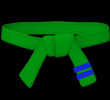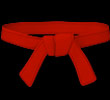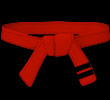Taekwondo 태권도Taekwondo Preschool
When you reach senior belt you are expected to guide the junior belts when they are beginning Taekwondo such as showing by example. To advance from one rank to the next, students typically complete promotion tests in which they demonstrate their proficiency in the various aspects of the art before a panel of judges or their teacher. View Taekwondo belt levels »
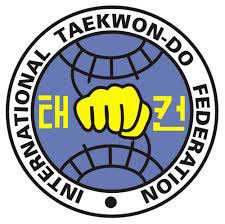
An Jung Geun 안중근
The names of these patterns typically refer either to events in Korean history or to important people in Korean history. Elements of the patterns may also be historical references, such as the number of moves, the diagram, the way the pattern ends, and so on.
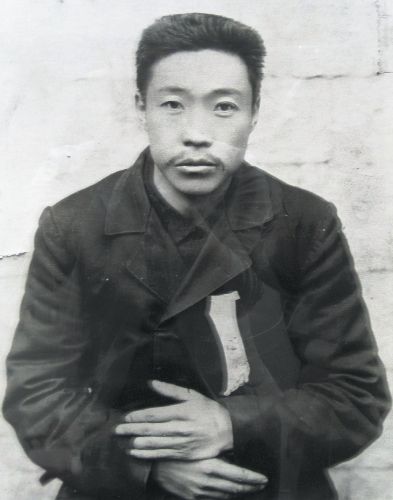
Ahn Jung-Geun or An Jung-geun (Korean pronunciation: [andʑuŋɡɯn]; September 2, 1879 – March 26, 1910; Baptismal name: Thomas) was a Korean independence activist, nationalist, and pan-Asianist.
On October 26, 1909, he assassinated Itō Hirobumi, a four-time Prime Minister of Japan and former Resident-General of Korea, following the signing of the Eulsa Treaty, with Korea on the verge of annexation by Japan. Ahn was posthumously awarded the Republic of Korea Medal of Order of Merit for National Foundation in 1962 by the Korean Government, the most prestigious civil decoration in the Republic of Korea, for his efforts for Korean independence.
Early Accounts
Ahn was born on September 2, 1879, in Haeju, Hwanghae-do, the first son of Ahn Tae-Hun (안태훈; 安泰勳) and Baek Cheon-Jo (백천조; 白川趙), of the family of the Sunheung Ahn (순흥안씨; 順興安氏) lineage. His childhood name was Ahn Eung-chil (안응칠; 安應七; [anɯŋtɕʰil]). As a boy, he learned Chinese literature and Western sciences, but was more interested in martial arts and marksmanship. Kim Gu (김구; 金九), future leader of the Korean independence movement who had taken refuge in Ahn Tae-Hun's house at the time, wrote that young Ahn Jung-Geun was an excellent marksman, liked to read books, and had strong charisma.
At the age of 25, he started a coal business, but devoted himself to education of Korean people after the Eulsa Treaty by establishing private schools in northwestern regions of Korea. In 1907 he exiled himself to Vladivostok to join in with the armed resistance against the Japanese colonial rulers. He was appointed a lieutenant general of an armed Korean resistance group and led several attacks against Japanese forces before his eventual defeat.
Religion
At the age of 16, Ahn entered the Catholic Church with his father, where he received his baptismal name "Thomas" (多默; 도마), and learned French. While fleeing from the Japanese, Ahn took refuge with a French priest of the Catholic Church in Korea named Wilhelm (Korean name, Hong Seok-ku; 홍석구; 洪錫九) who baptized and hid him in his church for several months. The priest encouraged Ahn to read the Bible and had a series of discussions with him. He maintained his belief in Catholicism until his death, going to the point of even asking his son to become a priest in his last letter to his wife.
Assassination to Ito Hirobumi
In 1909, Ahn passed the Japanese guards at the Harbin Railway Station.
Ito Hirobumi had come back from negotiating with the Russian representative on the train. Ahn shot Ito three times with an FN M1900 pistol on the railway platform. He also shot Kawagami Toshihiko (川上俊彦), the Japanese Consul General, Morita Jiro (森泰二郞), a Secretary of Imperial Household Agency, and Tanaka Seitaro (田中淸太郞), an executive of South Manchuria Railway, who were seriously injured. After the shooting, Ahn yelled out for Korean independence in Russian, stating "Корея! Ура!", and waving the Korean flag.
Afterwards, Ahn was arrested by Russian guards who held him for two days before turning him over to Japanese colonial authorities. When he heard the news that Ito had died, he made the sign of the cross in gratitude. Ahn was quoted as saying, "I have ventured to commit a serious crime, offering my life for my country. This is the behavior of a noble-minded patriot." Despite the orders from the Bishop of Korea not to administer the Sacraments to Ahn, Fr. Wilhelm disobeyed and went to Ahn to give the Last Sacraments. Ahn insisted that the captors call him by his baptismal name, Thomas.
In the court, Ahn insisted that he be treated as a prisoner of war, as a lieutenant general of the Korean resistance army, instead of a criminal, and listed 15 crimes Ito had committed which convinced him to kill Ito.
"15 reason why Ito Hirobumi should be killed
1. Assassinating the Korean Empress Myeongseong
2. Dethroning the Emperor Gojong
3. Forcing 14 unequal treaties on Korea.
4. Massacring innocent Koreans
5. Usurping the authority of the Korean government by force
6. Plundering Korean railroads, mines, forests, and rivers
7. Forcing the use of Japanese banknotes
8. Disbanding the Korean armed forces
9. Obstructing the education of Koreans
10.Banning Koreans from studying abroad
11.Confiscating and burning Korean textbooks
12.Spreading a rumor around the world that Koreans wanted Japanese protection
13.Deceiving the Japanese Emperor by saying that the relationship between Korea and Japan was peaceful when in truth it was full of hostility and conflicts
14.Breaking the peace of Asia
15.Assassinating the Emperor Komei
I, as a lieutenant general of the Korean resistance army, killed the criminal Ito Hirobumi because he disturbed the peace of the Orient and estranged the relationship between Korea and Japan. I hoped that if Korea and Japan be friendlier and are ruled peacefully, they would be a model all throughout the five continents. I did not kill Ito misunderstanding his intentions."
Imprisonment and death
Ahn's Japanese captors showed sympathy to him. He recorded in his autobiography that the public prosecutor, Mizobuchi Takao, exclaimed "From what you have told me, it is clear that you are a righteous man of East Asia. I can't believe a sentence of death will be imposed on a righteous man. There's nothing to worry about." He was also given New Year's delicacies and his calligraphy was highly admired and requested. After six trials, Ahn was sentenced to death by the Japanese colonial court in Ryojun (Port Arthur) in an unfair trial. Ahn was angered at the sentence, though he expected it. He had hoped to be viewed as a prisoner of war instead of an assassin. On the same day of sentencing at two o'clock in the afternoon, his two brothers Jeong-Geun and Gong-Geun met with him to deliver their mother's message, "Your death is for the sake of your country, and don't ask for your life cowardly. Your brave death for justice is a final filial regards to your mother."
Judge Hirashi, who presided over Ahn's trial, had promised Ahn that a stay of execution for at least a few months would be granted, but Tokyo ordered prompt action. Prior to his execution, Ahn made two final requests; that the wardens help him finish his essay, "On Peace in East Asia", and for a set of white silk Korean clothes to die in. The warden was able to grant the second request and resigned shortly afterwards. Ahn requested to be executed as a prisoner of war, by firing squad. But instead it was ordered that he should be hanged as a common criminal. The execution took place in Ryojun, on March 26, 1910. His grave in Harbin hasn't been found.
Views
There has been an argument that Itō's death resulted in the acceleration of the final stage of the colonization process, but the claim has been long disputed by some.
According to Donald Keene, author of "Emperor of Japan: Meiji and His World, 1852–1912", Ahn Jung-Geun was an admirer of Emperor Meiji of Japan. One of the 15 'charges' Ahn leveled against Ito was that he had deceived the Emperor of Japan, whom Ahn felt desired peace in East Asia and Korean independence. Ahn requested that Meiji be informed of his reasons for his assassination of Ito in the hopes that if Meiji understood his reasons, the emperor would realize how mistaken Ito's policies were and would rejoice. Ahn also felt sure that most Japanese felt similar hatred for Ito, an opinion he formed from talking with Japanese prisoners in Korea. While Ahn was staying in the prison and on the trial, many Japanese prison guards, lawyers and even prosecutors were inspired by Ahn's great spirit, righteousness, and humanity.
Legacy
The assassination of Ito by Ahn was praised by Koreans and many Chinese as well, who were struggling against Japanese invasion at the time. Well-known Chinese political leaders such as Yuan Shikai, Sun Yat-sen, and Liang Qichao wrote poems acclaiming An.
In the 2010 Ahn Jung-Geun Symposium in Korea, Wada Haruki (和田春樹), an activist who once worked at Tokyo University, evaluated Ahn by quoting Ito Yukio (伊藤之雄), a fellow history scholar in Kyoto University. In his text published in 2009, Ito Yukio claims that the reign by Ito Hirobumi resulted in strong resistance from Koreans as it was considered the first step for annexation of Korea due to the cultural differences, and that Ahn is not to be blamed even if he assassinated Ito without understanding Ito's ideology (2009, Ito).
On March 26, 2010, a nation-wide centenary tribute to Ahn was held in South Korea, including a ceremony led by the Prime Minister Chung Un-Chan and tribute concerts.

Ancestry
Ahn's family produced many other Korean independence activists. Ahn's cousin An Myeong-Geun (안명근; 安明根) attempted to assassinate Terauchi Masatake, the first Japanese Governor-General of Korea (조선총독; 朝鮮總督) who executed the Japan-Korea Annexation Treaty in 1910. He failed, however, and was imprisoned for 15 years; he died in 1926. Ahn's brothers Ahn Jeong-Geun (안정근; 安定根) and Ahn Gong-Geun (안공근; 安恭根), as well as Ahn's cousin Ahn Gyeong-Heun (안경근; 安敬根) and nephew Ahn Woo-Saeng (안우생; 安偶生), joined the Provisional Government of the Republic of Korea in Shanghai, China, which led by Kim Gu, and fought against Japan. Ahn Chun-Saeng (안춘생; 安春生), another nephew of Ahn's, joined the National Revolutionary Army of China, participated in battles against Japanese forces at Shanghai, and joined the Korean Liberation Army in 1940. Later, he became a lieutenant general of the Republic of Korea Army and a member of the National Assembly of South Korea.
Pan-Asianism
Ahn strongly believed in the union of the three great countries in East Asia, China, Korea, and Japan in order to counter and fight off the "White Peril", namely, the European countries engaged in colonialism, and restore peace to East Asia. He followed the progress of Japan during the Russo-Japanese War and claimed that he and his compatriots were delighted at hearing of the defeat of one of the agents of the White Peril, but were disappointed that the war ended before Russia was totally subjugated.
Ahn felt that with the death of Itō, Japan and Korea could become friends because of the many traditions that they shared. He hoped that this friendship, along with China, would become a model for the world to follow. His thoughts on Pan-Asianism were stated in his essay, "On Peace in East Asia" (東洋平和論; 동양평화론) that he worked on and left unfinished before his execution. In this work, Ahn recommends the organization of combined armed forces and the issue of joint banknotes among Korea, Japan, and China. Sasagawa Norikatsu (笹川紀勝), a Professor of Law at Meiji University, highly praises Ahn's idea as an equivalent of the European Union and a concept that preceded the concept of United Nations by 10 years.
Calligraphic works
Ahn is highly renowned for calligraphy works. While he was in prison, many prison guards such as Chiba Toshichi (千葉十七) who respected him, made requests to Ahn for calligraphy works. He left many calligraphy works which were written in the jail of Lushun although he hadn't studied calligraphy formally. He would leave on his calligraphy works a signature of "大韓國人" (Great Korean) and a handprint of his left hand that was missing the last joint of the ring finger, which he had cut off with his comrades in 1909 as a pledge to kill Ito. Some of the works were designated as Treasure No. 569 of the Republic of Korea in 1972. One of his famous works is "一日不讀書口中生荊棘" (일일부독서 구중생형극; Unless one reads every day, thorns grow in the mouth), a quote from the Analects of Confucius.
Memorial Hall
Memorial halls for Ahn were erected in Seoul in 1970 by the South Korean government and in Harbin by the Chinese government in 2006. Another memorial hall honoring Ahn Jung-Geun was opened on Sunday, 19 January 2014 in Harbin. The hall, a 200-square meter room, features photos and memorabilia.
In popular culture
The North-Korean film An Jung Gun Shoots Ito Hirobumi is a dramatized story of the event. He is commemorated in the martial art Taekwondo with the Joon Gun pattern being dedicated to him.
Novelist Bok Geo-il's 1987 novel Looking for an Epitaph (碑銘 (비명)을 찾아서) is an alternate history story, which is set in the 1980s of Korea that remained a permanent colony of Japan, as a cascade effect of Ahn's failure to assassinate Ito. The Korean movie 2009 Lost Memories is very loosely based on the novel but tells a completely different story. In the Korean film, Ahn Jung-Geun is spotted and killed by Japanese soldiers before he is able to shoot Ito Hirobumi.
The South-Korean film Thomas An Jung-geun (도마 안중근) is another dramatized story of the event. Released on September 10, 2004, it is directed by Seo Se-won. Ahn Jung-Geun is played by actor Yu Oh-seong and Ito Hirobumi is played by Yoon Joo-sang.
In the PC game Civilization IV expansion pack, Beyond the Sword, Ahn Jung-Geun is a Great Spy. The story is summarized in the song 1909 by the band Scrabbel. In honor of him, ROKS Ahn Jung-Geun (SS 075), the third ship of Son Wonil class submarines, was commissioned in 2009.
Promotion from one dan to the next can take years. The general rule is that a black belt may advance from one rank to the next only after the number of years equivalent to the current rank. For example, a newly promoted third-degree black belt may not be allowed to advance to fourth-degree until three years have passed. View more information on Black Belt Dan ( 단 ) ».
RESOURCES
This article uses material from the Wikipedia article "An Jung Geun", which is released under the Creative Commons Attribution-Share-Alike License 3.0.








